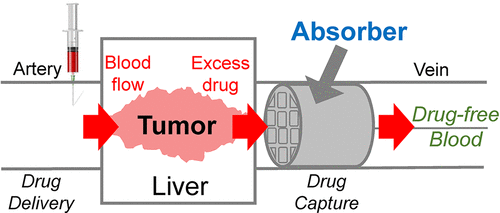![[Image: UC Berkeley]](https://fabbaloo.com/wp-content/uploads/2020/05/oc-2018-00700e_0006_img_5eb09f1e65b6f.gif)
A new 3D printed sponge could help reduce side effects of chemotherapy.
Cancer has impacted us all. Incidence is high, and anyone who has experienced personally or at a loved one’s side the rollercoaster of diagnosis, treatment, and side effects can vouch for the toll it takes. My family is going through this right now, and it’s tough. Chemo hasn’t come into the picture (yet?) for my dad, but is among the most widespread treatment courses. The words “cancer patient” typically drum up a mental image of someone undergoing or recovering from the treatment, with its telltale fatigue, weight and hair loss, and nausea. Scientists recently asked a question that, in layman’s terms, was basically: how could chemo suck less?
To kill cancer cells, chemo essentially poisons them. The drug cocktail used in chemotherapy is generally injected into the bloodstream, where it courses through the body ready to take on the tumor. And the rest of the body, because poison isn’t actually good for healthy bits, either. What if there was a way to target those toxins to the tumor and help keep the rest of the body free of them? Filtering out the drugs before they can travel too far away from the tumor proved an idea worth examination.
Sponges clean up the rest of our messes, so why not put them to use internally? This idea comes to healthcare direct from…the petroleum industry.
“An absorber is a standard chemical engineering concept. Absorbers are used in petroleum refining to remove unwanted chemicals such as sulfur. Literally, we’ve taken the concept out of petroleum refining and applied it to chemotherapy,” said Nitash Balsara, a professor of chemical and biomolecular engineering at the University of California, Berkeley, and a faculty scientist at Lawrence Berkeley National Laboratory
Balsara is part of the developmental team, whose paper on the sponge was published today in ACS Central Science. Steven Hetts, an interventional radiologist at UC San Francisco, approached Balsara and researchers at the University of North Carolina, Chapel Hill with the idea to help clean the bloodstream. Recognizing that human bodies (specifically veins) aren’t one-size when it comes to cleaning tools, they looked to 3D printing to help create patient-specific sponges.
UCB postdoc Hee Jeung Oh took on work in adhering an absorbent polymer to a 3D printed cylinder. After more than a year of work, research was ready to go patient-specific — and that brought Joseph DeSimone, PhD and his team at Carbon into the project.
![Cross section through absorber, showing crosslinks and ionic polymer coating (orange) [Image: UC Berkeley]](https://fabbaloo.com/wp-content/uploads/2020/05/absorber-768x753_img_5eb09f1e95edc.jpg)
While much of the work we’ve heard about lately from Carbon focuses on manufacturing — indeed, mass manufacturing — the company has expertise across a variety of applications, including dental and healthcare. The delicate nature of a vein-sized device to go into the human body required an obvious approach of care, and the team at Carbon took to it swimmingly.
They 3D printed the 5mm-diameter, 30mm-long cylinders used for the study. In their published study, the authors noted that “It is clear that the printing process faithfully reproduces the targeted internal structures” from their CAD renderings.
While the drug sponge has already been tested in pigs — absorbing an average of 64% of a liver cancer chemo agent that had been injected upstream — it’s already well on its way to human trials in the next few years. While still requiring regulatory approval, FDA standards are more accessible for temporary devices like this one. It’s inserted into the veins through a wire, like a stent, and stays in place for the hours-long duration of a chemotherapy session, taken out afterward.
![Proposed approach for drug capture using a 3D-printed absorber for endovascular treatment of liver cancer. The chemotherapy drug is administered intra-arterially via a catheter in the hepatic artery (bottom). Excess drug is captured by the absorber in the vein draining the organ (vena cava, top). [Image: UC Berkeley]](https://fabbaloo.com/wp-content/uploads/2020/05/livertreatment_img_5eb09f1eca35d.jpg)
Initial focus is on liver cancer, but could be expanded significantly, as Hetts explains:
“We are developing this around liver cancer because it is a big public health threat – there are tens of thousands of new cases every year – and we already treat liver cancer using intra-arterial chemotherapy. But if you think about it, you could use this sort of approach for any tumor or any disease that is confined to an organ, and you want to absorb the drug on the venous side before it can distribute and cause side effects elsewhere in the body. Ultimately we would like to use this technology in other organs to treat kidney tumors and brain tumors.”
![Liver cancer treatment has advanced from intravenous delivery of chemotherapy drugs, which affects not only the tumor and liver but also organs throughout the body (red, left), to intra-arterial chemo (center), which limits the spread of the drug, though up to half can still exit the liver to poison the rest of the body. The proposed absorber would sop up unused drug emerging from the liver, drastically reducing unwanted effects on other organs (right). [Image: UC Berkeley]](https://fabbaloo.com/wp-content/uploads/2020/05/comparativetreatments-768x576_img_5eb09f1f07552.jpg)
Patient-specific 3D printing is already seeing cautious enthusiasm in the medical community, with devices, prosthetics, medical models, and more being 3D printed in-house. Developing internal expertise in 3D printing is proving a boon for many medical systems, and collaborative research with potential real-world impact is set to increase the pace of innovation.
Via UC Berkeley

